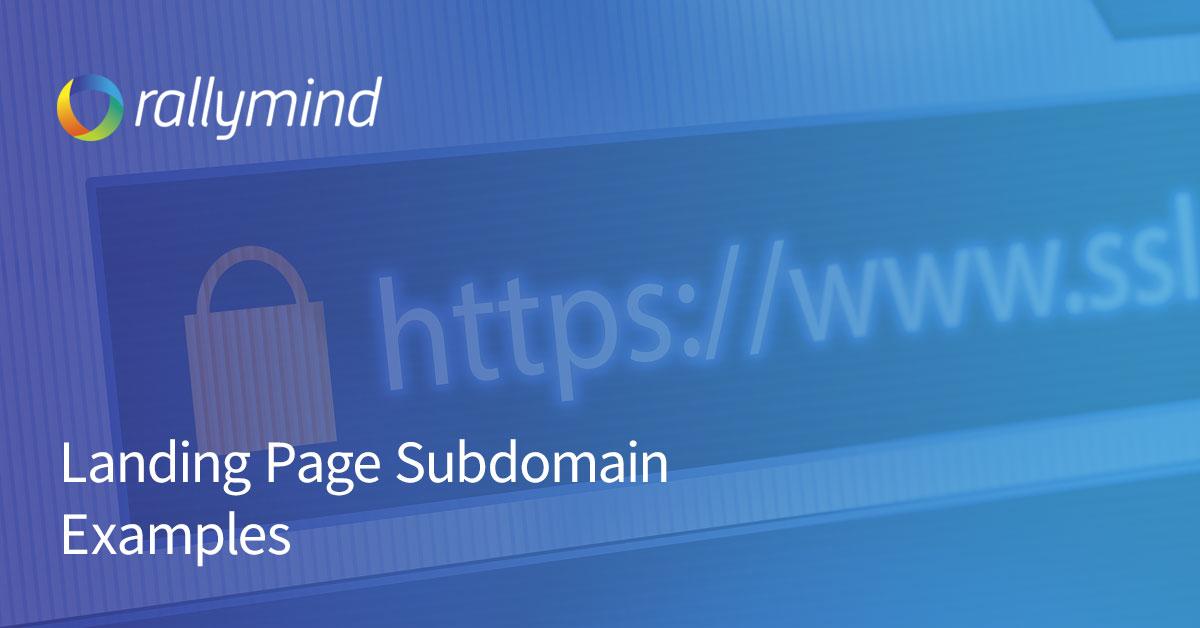
Subdomains are methods of creating unique web addresses for different sections of your site and appear in the URL as [subdomain].[domain].com.
Often, marketers want to know the best ways to publish landing pages. This answer varies based on the strategy at hand, and the form that your ad campaign takes.
With scalable landing page creation tools like RallyMind's software which allows you to set up landing pages for any purpose using a simple template, there are four main ways to publish your landing pages.
1. One Central Domain with Sub-directories
This method of publishing landing pages works best when you have geofenced campaigns for different service areas or different contacts in each area. Let's say your business makes shoes and sells them under your own brand name, High-Quality Shoes, and the domain, HighQShoes.com.
If you start a campaign meant to target shoe buyers in different areas, it would probably be advantageous to publish your landing pages using one central domain, with subdirectories — the fields of a URL after a slash mark — organizing the many landing service areas. Your landing pages would end up looking like this:
https://highqshoes.com/atlanta/
https://highqshoes.com/marietta/
https://highqshoes.com/savannah/
2. Subdomains Under Many Different Domains
Let's look at a different scenario. In this example, your shoe brand relies on a co-op network of vendors to sell your brand to consumers in their service areas. As the parent brand, you still have to create landing pages, but because you're not selling your product, it would make more sense to publish your landing pages under the domains of the different partners in your vendor network.
In this case, your landing page URLs might look more like this:
https://promos.billsshoes.com/highqshoes/
https://promos.kicksdepot.com/highqshoes/
https://promos.footoutfitters.com/highqshoes/
3. One Central Domain With Branded Subdomains
This is another way to leverage a large vendor network when you publish landing pages for your brand. In the last example, we used the domains of each individual shoe retailer and added a subdomain onto each one for your business', High-Quality Shoes', products.
In this example, we take the reverse approach and add subdomains for each partner retailer under the central domain of your brand. Here are few examples of roughly how this method will look, using the same three example vendors:
https://billsshoes.highqshoes.com
https://kicksdepot.highqshoes.com
https://footoutfitters.highqshoes.com
4. Separately Registered Domains for Each Landing Page
This method works best when you have PPC campaigns for different franchises in your brand's network, and you want to drive traffic to each one separately. Let's say you start franchising your shoe brand so that retail stores exist under your brand umbrella. You might decide to give each franchise a unique domain for their business, but keep the identity of the entire brand. In this case, landing pages for campaigns specific to different franchises would be published under unique URLs. For example:
https://highqshoesatlanta.com
https://highqshoesmarietta.com
https://highqshoessavannah.com
From there, you could add directories to keep the URL on message with the specific ad. For example, let's say you run an ad for running shoes that links back to landing pages for different franchises according to the viewers' location. The URL here would be:
https://www.highqshoesatlanta.com/runningshoes/
You could do this for any of the landing page subdomain strategies listed above. With the help of RallyMind, designing, creating, and publishing 10s, 100s, and even 1000s of landing pages is easy!
